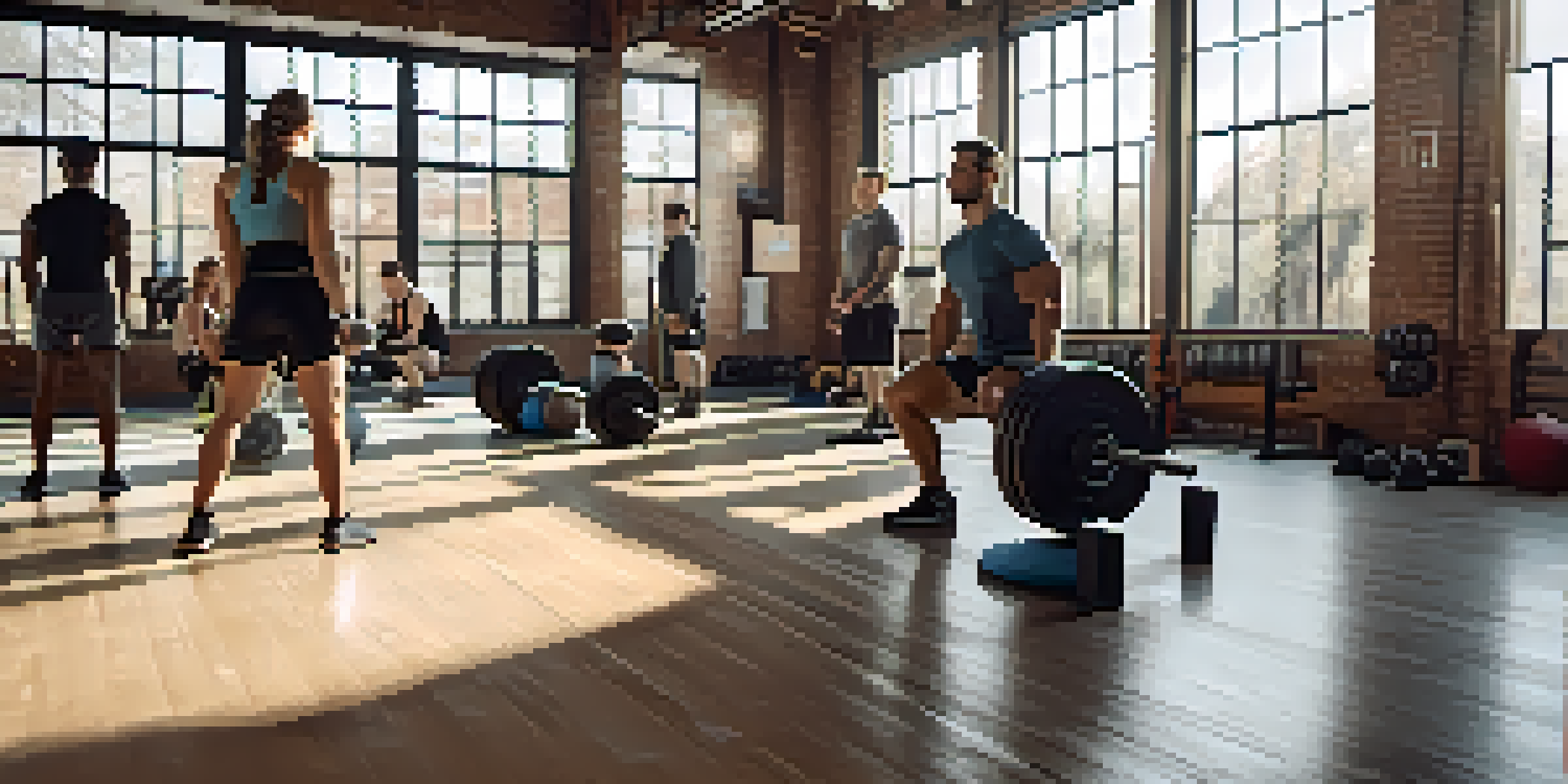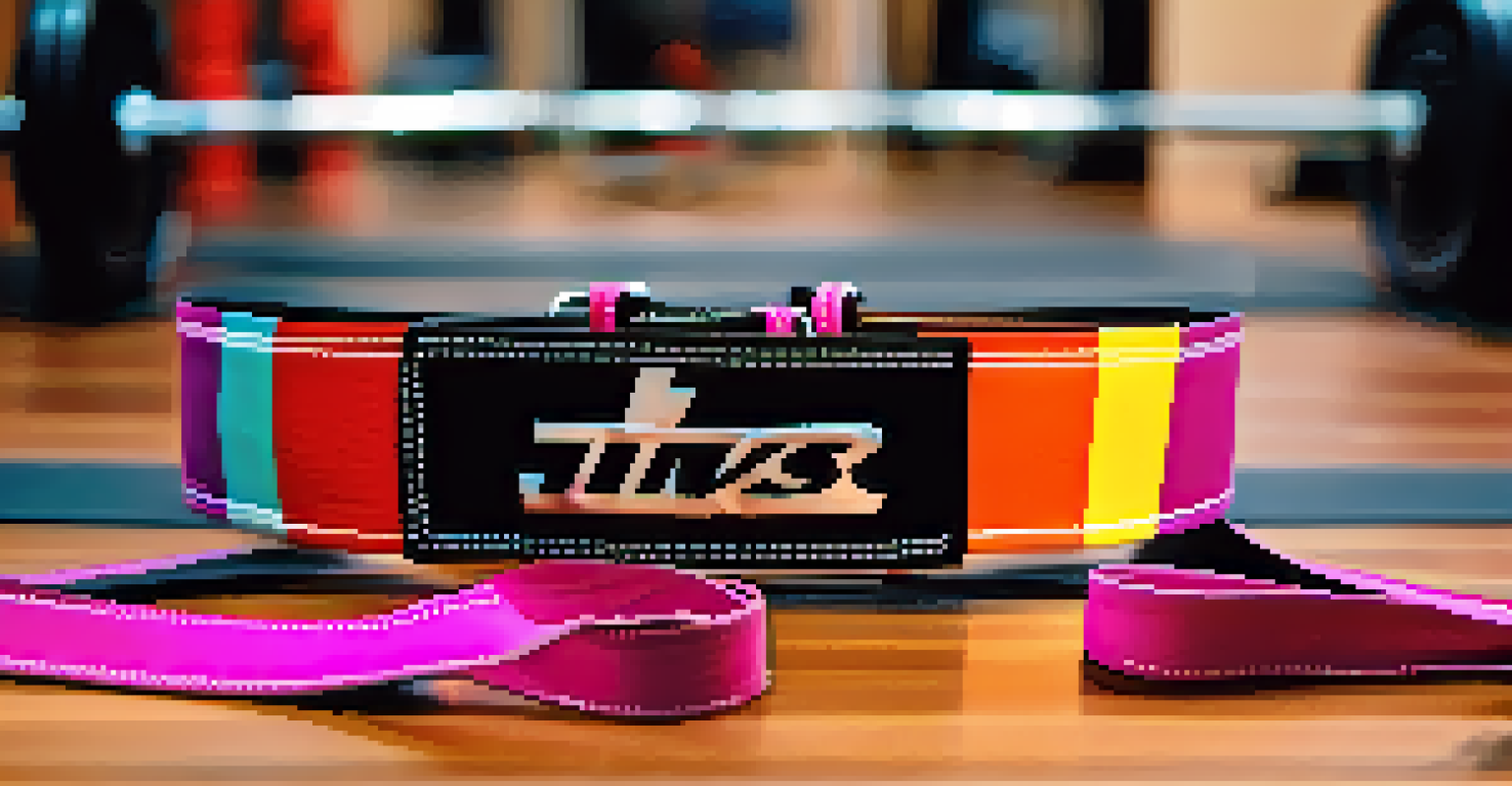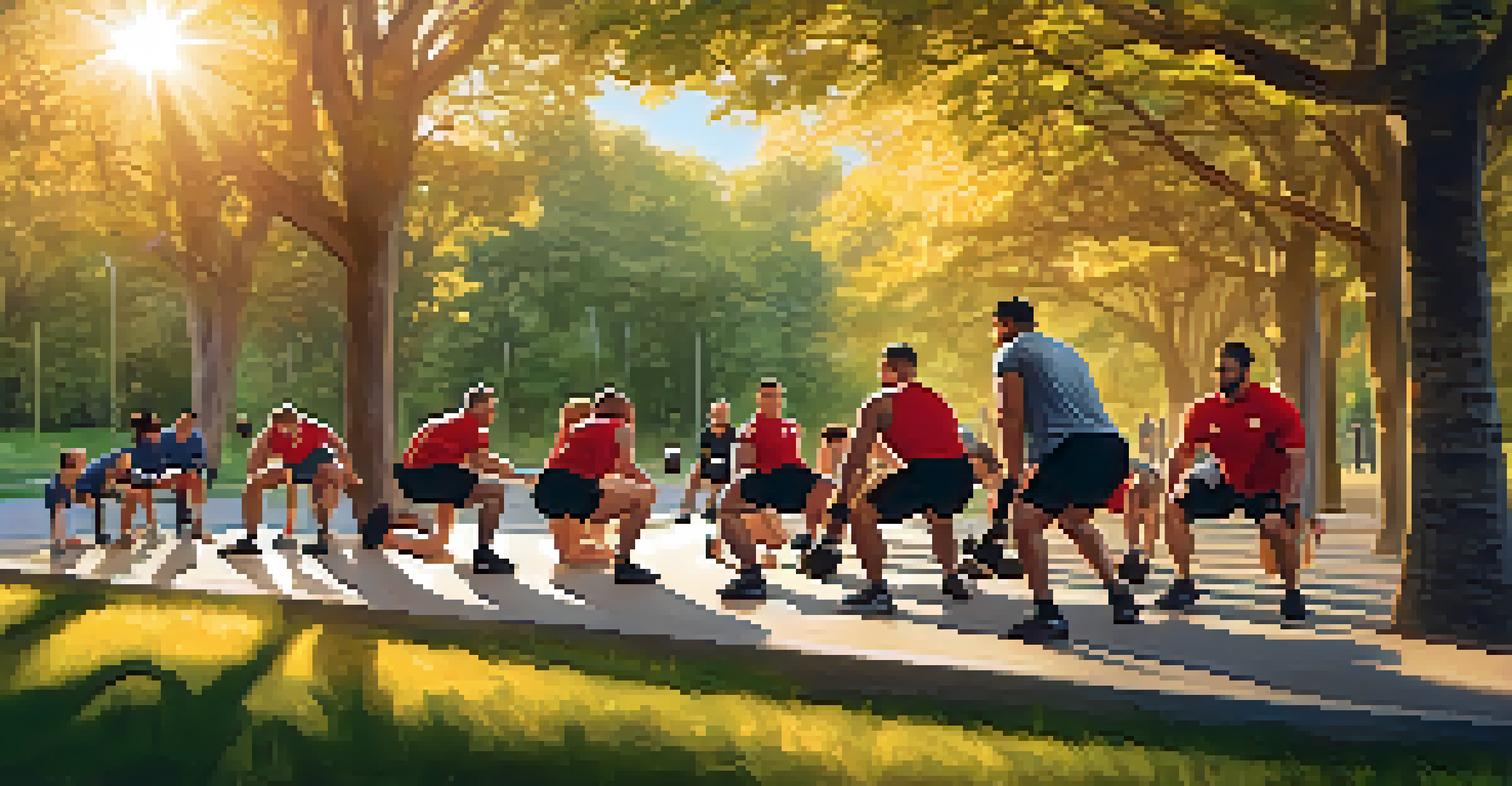Powerlifting for Rehabilitation: A Guide for Beginners

Understanding Powerlifting and Its Benefits for Rehabilitation
Powerlifting is a strength sport that focuses on three main lifts: the squat, bench press, and deadlift. For those recovering from injury, these lifts can be particularly beneficial, as they help build strength and stability in a controlled manner. Unlike traditional weightlifting, powerlifting emphasizes maximal strength, making it an effective tool in rehabilitation settings.
Strength does not come from physical capacity. It comes from an indomitable will.
One of the main advantages of powerlifting is its ability to improve functional movement patterns. By focusing on proper technique and gradual progression, individuals can regain confidence in their bodies. This is crucial for those who have experienced injuries and may be apprehensive about physical activity.
Moreover, powerlifting can help enhance bone density and muscle mass, which are vital for overall health. These benefits make it an appealing option for those looking to rehabilitate, as stronger muscles and bones can reduce the risk of future injuries.
Consulting with Professionals Before Starting Powerlifting
Before diving into powerlifting, it's essential to consult with a healthcare professional or a physical therapist. They can evaluate your specific situation and determine if powerlifting is a suitable option for your rehabilitation journey. This step is crucial, as it ensures that you're taking the right approach and not exacerbating any existing injuries.

A qualified trainer can also provide personalized guidance, helping you establish a solid foundation. They can teach you proper lifting techniques to minimize the risk of injury while maximizing gains. Learning the correct form is particularly important in powerlifting, as improper technique can lead to setbacks.
Powerlifting Aids Injury Recovery
Powerlifting focuses on controlled strength-building, making it an effective rehabilitation tool for those recovering from injuries.
Additionally, professionals can create a tailored program that incorporates powerlifting into your rehabilitation plan. This personalized touch is vital for beginners, ensuring that your training aligns with your recovery goals and overall fitness level.
Setting Realistic Goals for Your Powerlifting Journey
When starting powerlifting for rehabilitation, it's crucial to set realistic and achievable goals. Instead of aiming for lifting massive weights right away, focus on gradual progress. This could mean starting with lighter weights to master your form, which will ultimately lead to better long-term results.
The only way to discover the limits of the possible is to venture a little way past them into the impossible.
Consider tracking your progress with a journal or an app. Documenting your lifts, how you feel, and any challenges you encounter can provide valuable insights. This practice not only keeps you motivated but also helps you identify patterns in your training, allowing for adjustments when necessary.
Remember, rehabilitation is a journey, and everyone's pace is different. Celebrate small victories along the way, as they contribute to your overall progress and mindset, making the experience more enjoyable.
The Importance of Proper Warm-Up and Cool Down
Before you even pick up a barbell, warming up is essential for any powerlifting session, especially during rehabilitation. A proper warm-up increases blood flow to your muscles and prepares your body for lifting. Dynamic stretches and mobility exercises can help loosen tight areas and enhance your range of motion.
Cool-downs are equally important and should not be overlooked. After your lifting session, take time to stretch and relax your muscles. This practice can aid in recovery and reduce soreness, making it easier to stay on track with your training plan.
Consult Experts for Safe Training
Consulting healthcare professionals and qualified trainers ensures a safe approach to incorporating powerlifting into your rehabilitation journey.
Incorporating both warm-ups and cool-downs into your routine not only helps prevent injuries but also fosters a better connection between your mind and body. This awareness is crucial for anyone in rehabilitation, allowing you to listen to your body’s signals.
Choosing the Right Equipment for Powerlifting Beginners
Selecting the right equipment is key for beginners in powerlifting, especially when focusing on rehabilitation. Start with basic items like a pair of weightlifting shoes, which provide stability and support during lifts. Proper footwear can make a noticeable difference in your performance and safety.
Additionally, consider using a weightlifting belt. While it’s not necessary for beginners, a belt can offer extra support for your lower back once you start lifting heavier. However, it's essential to learn how to lift properly before relying on any equipment for support.
Lastly, don’t forget about accessories like wrist wraps and knee sleeves. These items can provide extra support and confidence, particularly if you have previous injuries. Just remember, the right equipment is there to assist you, not replace good technique.
Listening to Your Body: Adjusting Your Training as Needed
One of the most important lessons in rehabilitation through powerlifting is learning to listen to your body. Pain is often a sign that something may not be right, so it’s essential to differentiate between discomfort from exertion and pain from potential injury. Keeping a close eye on how you feel during and after workouts will guide your training decisions.
If you experience pain that seems unusual or persistent, don't hesitate to adjust your training. This might mean reducing weights, changing exercises, or even taking a break to recover fully. Remember, rehabilitation is about progress, not pushing through pain.
Set Realistic Goals for Progress
Setting achievable goals and tracking progress helps maintain motivation and fosters a positive mindset during rehabilitation.
Being attuned to your body can also help you recognize when you're ready to progress. As you gain strength and confidence, gradually increase weights or intensity, but do so in a way that feels comfortable and sustainable.
Building a Supportive Community for Your Journey
Finding a supportive community can be a game-changer in your powerlifting rehabilitation journey. Surrounding yourself with like-minded individuals can provide motivation, encouragement, and a sense of belonging. Whether it's joining a local gym or an online forum, connecting with others can make your experience more enjoyable.
Consider participating in group training sessions or powerlifting clubs. These settings not only offer camaraderie but also provide opportunities to learn from more experienced lifters. Sharing tips, experiences, and challenges can foster a supportive atmosphere that enhances your progress.

Additionally, don’t underestimate the power of social media. Following powerlifting communities or influencers can provide inspiration and valuable insights. Engaging with others who share your goals can help you stay accountable and committed to your rehabilitation journey.